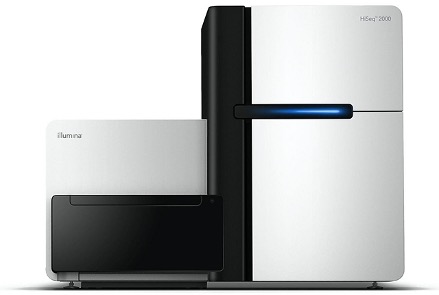Isoform-Specific Loss Of Dystonin Causes Charcot-Marie-Tooth Disease
By LabMedica International staff writers
Posted on 20 Aug 2020
Charcot-Marie-Tooth (CMT) disease, also called hereditary motor and sensory neuropathy, is among the most common neurogenetic diseases and is characterized by progressive length-dependent weakness and sensory loss. Posted on 20 Aug 2020
CMT is divided into demyelinating (type 1) and axonal (type 2) forms of the disease based on clinical, electrophysiological, histological, and genetic features. Recessively inherited demyelinating neuropathies are called CMT4, whereas recessively inherited axonal neuropathies are called autosomal recessive (AR)-CMT.

The HiSeq 2000 Sequencing System (Photo courtesy of Illumina).
Neurologists at the University of Pennsylvania School of Medicine (Philadelphia, PA, USA) and their colleagues applied whole exome sequencing (WES) to analyze the more than 30 million base pairs of DNA that encode the 20,000 proteins in humans. By examining three siblings, two affected and one unaffected, they were able to deduce the genetic basis of mutations that caused the two siblings to be affected.
Genomic DNA was isolated from peripheral blood from all participants. Exome DNA was captured using the SureSelect, Human All Exon5 50 Mb kit (Agilent Technologies, Santa Clara, CA, USA) and sequenced on a HiSeq 2000 (Illumina, San Diego, CA, USA). RNA was isolated from skin using the ZR-Duet DNA/RNA MiniPrep Plus kit (Zymo, Irvine, CA, USA). Complementary DNA (cDNA) was reverse transcribed using SuperScript III First-Strand Synthesis System (Invitrogen, Waltham, MA, USA).
The team identified compound heterozygous mutations in dystonin (DST), which is alternatively spliced to create many plakin family linker proteins (named the bullous pemphigoid antigen 1 [BPAG1] proteins) that function to bridge cytoskeletal filament networks. One mutation (c.250C>T) is predicted to cause a nonsense mutation (p.R84X) that only affects isoform 2 variants, which have an N-terminal transmembrane domain; the other (c.8283+1G>A) mutates a consensus splice donor site and results in a 22 amino acid in-frame deletion in the spectrin repeat domain of all BPAG1a and BPAG1b isoforms.
Steven S. Scherer, MD, PhD, a professor of Neurology and senior author of the study, said, “We are in the era where treatments for genetic diseases are possible. This brother and sister stand to benefit from that approach because we know the gene that is missing, and if we could replace it, that should at least prevent their progression.”
The authors concluded that their findings introduce a novel human phenotype, axonal Charcot-Marie-Tooth, of recessive DST mutations, and provide further evidence that BPAG1 plays an essential role in axonal health. The study was published on July 31, 2020 in the journal Neurology Genetics.
Related Links:
University of Pennsylvania School of Medicine
Agilent Technologies
Illumina
Zymo
Invitrogen - Thermo Fisher










 (3) (1).png)


